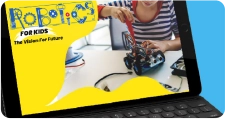
Moonpreneur
3D printing can be an engaging and educational activity for people of all ages, including children. However, it’s important to consider the complexity and safety of the 3D printing process when determining an appropriate age for a child to use a 3D printer.
For very young children below 8 years, it may be more appropriate to use a 3D printing pen or other simple crafting tools to create basic 3D shapes. As children get older and gain more fine motor skills, they may be ready to use a 3D printer with adult supervision.

Here will be answering a few burning questions which will run through every child’s mind regarding 3D Printing and the processes which are used, as well as help you understand the very basics of this science and the benefits you can reap!
What is 3D Printing?
3D printing is a process of creating a physical object from a digital model. It involves using a 3D printer, which is a machine that prints successive layers of material to build up an object.
To create an object using 3D printing, you first need to design a digital model of the object using computer-aided design (CAD) software. The digital model is then converted into a format that the 3D printer can understand and use to build the object layer by layer.
3D printing can be used to create a wide range of objects, from simple shapes to complex structures with intricate details. Younger children might enjoy creating simple shapes or characters, while older children may be able to tackle more complex projects such as designing and printing their own toys or gadgets.
What materials does one use for 3D Printing?
3D printing, also known as additive manufacturing, is a process that creates a three-dimensional object by building it layer by layer from a digital model. A wide variety of materials can be used in 3D printing, including plastics, metals, ceramics, and even living cells.
Some common materials used in 3D printing include:
Plastics: Polylactic acid (PLA), acrylonitrile butadiene styrene (ABS), and polyethylene terephthalate (PET) are some of the most commonly used plastics in 3D printing. These materials are relatively inexpensive and easy to work with, but they may not be as strong or durable as some other materials.
Metals: 3D printing with metals allows for the creation of complex, high-strength parts. Common metals used in 3D printing include steel, aluminum, titanium, and copper.
Ceramics: Ceramic materials can be used in 3D printing to create objects with a high level of detail and a smooth surface finish.
Living cells: 3D printing with living cells, also known as bioprinting, has the potential to revolutionize the field of medicine by allowing the creation of replacement tissues and organs.
What are the popular techniques used for the 3D Printing process?
3D printing, also known as additive \manufacturing, is a process that creates a three-dimensional object by building it layer by layer from a digital model. There are several different techniques and processes used in 3D printing, including:
- Fused Deposition Modeling (FDM): This is the most common type of 3D printing process. It involves melting a plastic filament and depositing it layer by layer to build up the object.
- Stereolithography (SLA): This process uses a laser to cure layers of liquid resin into a solid object.
- Selective Laser Sintering (SLS): This process uses a laser to sinter, or partially melt, layers of powdered material, such as metal or plastic, into a solid object.
- Digital Light Processing (DLP): This process uses a projector to cure layers of liquid resin into a solid object.
- Continuous Liquid Interface Production (CLIP): This process uses a light projector and oxygen to cure layers of liquid resin into a solid object.
The specific process used will depend on the material being used, the complexity of the object being printed, and the capabilities of the 3D printer.
How Is Learning 3D Printing Beneficial For Kids?
3D printing can be an important tool for kids to learn and explore their creativity as well as problem-solving skills. It allows kids to take a digital design and bring it to life as a physical object, which can be a very unique and rewarding experience
Here are some key benefits of teaching 3D printing to kids:
- Encourages creativity: 3D printing allows kids to create and design their own objects, which can be a great way to encourage creativity and imagination.
- Develops problem-solving skills: 3D printing involves troubleshooting and problem-solving, as kids may need to make adjustments to their designs or troubleshoot issues that arise during the printing process.
- Introduces kids to new technologies: 3D printing is a cutting-edge technology that is used in a variety of industries. Introducing kids to 3D printing can help them become familiar with new technologies and may spark an interest in STEM (science, technology, engineering, and math) fields.
- Enhances learning: 3D printing can be a fun and engaging way for kids to learn about a variety of subjects, such as geometry, physics, and engineering. It can also be used to bring concepts from the classroom to life, making them more tangible and easier to understand.
- Promotes teamwork and collaboration: 3D printing projects can be a great opportunity for kids to work together and collaborate on a common goal.
Is 3D printing gaining popularity among kids?
3D printing has become increasingly popular in recent years, and it has been embraced by people of all ages, including kids. Many schools and libraries now have 3D printers available for students to use, and there are also a number of 3D printing clubs and camps specifically designed for kids.
In addition, there are a number of easy-to-use 3D printers on the market that are specifically designed for kids and beginners. As 3D printing technology continues to advance and become more accessible, it is likely that it will continue to gain popularity among kids.
Though, at Moonpreneur we ensure a few pointers while introducing our students to 3D printing, in order to make learning a fun-filled and educational task for kids
- Age: 3D printing involves working with small parts and using technology, so it may not be suitable for children below the age of 8 years. However, older kids and teenagers can often handle the complexity and technical aspects of 3D printing.
- Safety: 3D printers use heated extruders to melt and print with plastic, so it’s important that you as a parent supervise your kids and make sure they understand the dangers of the printer they are using.
- Learning resources: Our online program is taught by industry experts and helps kids learn about 3D printing and how to use CAD software.
Moonpreneur understands the needs and demands this rapidly changing technological world is bringing with it for our kids and thus our holistically created online Product Design course will help kids master the art of 3D printing and PCB Designing. Enroll your child today!









